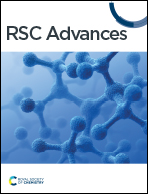Rapid deterioration in buried leather: archaeological implications†
Abstract
Understanding archaeological leather degradation helps inform economies, crafts, and technologies of historic communities. However, archaeological leather is at high risk of degradation due to deterioration and changes within the burial conditions. This research applied non-destructive FTIR-ATR to experimentally buried vegetable-tanned leather and archaeological leather excavated at the Roman site of Vindolanda, UK to explore survival, destruction, and preservation processes of tanned leather. Analyses focused on observing and monitoring changes in chemical functional groups related to leather tannins, collagen and lipid components following burial. FTIR-ATR results highlighted rapid changes following experimental burial in wet soil, tentatively associated with early onset microbial activity, which targeted readily available lipids but not tightly bound collagen. Prior to burial, differences in structural composition were present in leather spectra based on manufacture; however, following burial in wet soil, FTIR-ATR spectra indicated de-tanning occurs rapidly, especially in waterlogged conditions, with archaeological leather becoming more uniform and similar to untanned leather. Therefore, the comparison of FTIR-ATR results from archaeological leather to experimentally buried leather samples was informative for showing the destructive de-tanning in waterlogged environments. The comparison of FTIR-ATR data from modern unburied leather cannot be compared against archaeological samples. Importantly, despite de-tanning occurring soon after burial, the vegetable-tanning method promoted long-term preservation of leather in wet soil. The observed changes could not be directly associated with the proportion of condensed to hydrolysable tannin, suggesting alternate variables impacted the preservation. Furthermore, mineral components introduced into the leather through the animal skin, tannin material and/or tannin liquid are suggested to contribute to these changes. Crucially a high degree of heterogeneity in error results within the experimentally buried sample material underlined that any changes in collagen ratios cannot be overinterpreted and must be considered within the context of larger datasets.



 Please wait while we load your content...
Please wait while we load your content...